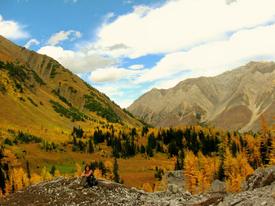apple cores and other commonly discarded foods
Replies
-
When I cut up a pineapple I always leave the core on the wedges. It's often the sweetest part, tho' harder to chew-- maybe contains more fiber. In any case, I hate wasting any of my pineapple!0
-
For vegtables i have a ziplock bag in the freezer all of the throw away stuff go into it until the next time I make soup and use it for stock
For nightly vegetables that there just isn't much left of them they go into another bag for the actual soup.
Fruit I have nothing.0 -
I know of a lot of raw vegans that juice then dehydrate the pulp and make "burgers" and crackers and such. Kind of the same deal here. Maybe throwing all that stuff in a food processor and then baking it into something or dehydrating could work.0
-
Isn't it not healthy to eat apple cores because of the seeds?
It IS HEALTHY to eat apple cores... because of the seeds! Seeds of apples, pears, apricots, etc. contain a minute bit of cyanide in them, which helps you to fight cancers. Many who practice holistic natural eating and cures see the benefit in eating them.
You'll get all kinds of people on both sides of the argument, but for those of us who believe in God's word, we remember that in Genesis He said that the seeds of all fruits were good for eating. Happy seed eating, folks.
Bad advice. God gave us a brain to be able to figure things out. This kind of ignorance is very dangerous. There are so many things out there that will give you a horrible, nasty death, including the unedible parts of plants we grow for food.0 -
I always eat the core...for 2 reasons
1 - There's still plenty of healthy, tasty apple in the core - why let it go to waste?
2 - I can't be bothered finding a bin to put the core in :laugh:0 -
Composting is a great way to "use" the pieces you would normally discard. My garden loves all of the compost
 0
0 -
I always eat the apple core...whoops!0
-
You can use the stems of herbs to flavor rice or other grains.0
-
Apple core seeds contain cyanide. There is a documented case in Kingsbury's Poisonous Plants of North America (a key reference) of a man who liked apple seeds, saved himself a cup full, ate them and died.
I eat the whole apple and I'm 45 and still alive
The pits of common fruits are frequently poisonous, as are parts of the plant that we don't eat. Rhubarb leaves, for example. Again in Kingsbury, a documented case of a woman who fried some up, ate them and died. In the same category are the parts of the potato plant that are not tubers, and tomato plants.
IF you are going to eat like this, please research your plants to make sure that you are not ingesting something deadly.
http://books.google.ca/books/about/Poisonous_plants_of_the_United_States_an.html?id=-kNtAAAAMAAJ&redir_esc=y
I just checked your profile and see that you are from Australia. Kingsbury would still be useful in checking out the parts of plants commonly eaten as food that are toxic. It is an exhaustive list of plants toxic to the Americas, but there are no doubt just as good references to Australian plants that you might be putting on your plate.0 -
Apple core seeds contain cyanide. There is a documented case in Kingsbury's Poisonous Plants of North America (a key reference) of a man who liked apple seeds, saved himself a cup full, ate them and died.
I eat the whole apple and I'm 45 and still alive
The pits of common fruits are frequently poisonous, as are parts of the plant that we don't eat. Rhubarb leaves, for example. Again in Kingsbury, a documented case of a woman who fried some up, ate them and died. In the same category are the parts of the potato plant that are not tubers, and tomato plants.
IF you are going to eat like this, please research your plants to make sure that you are not ingesting something deadly.
http://books.google.ca/books/about/Poisonous_plants_of_the_United_States_an.html?id=-kNtAAAAMAAJ&redir_esc=y
I just checked your profile and see that you are from Australia. Kingsbury would still be useful in checking out the parts of plants commonly eaten as food that are toxic. It is an exhaustive list of plants toxic to the Americas, but there are no doubt just as good references to Australian plants that you might be putting on your plate.
Well, now you know better. So if you eat apple seeds you do it with full knowledge of their toxicity.
Ditto for cherry pits (including pin cherries and choke cherries where the pits are strained out before you make jam), and peach and apricot pits. The extention departments of many universities have posted to the web all kinds of documentation on the toxicity of common plants. While reading Kingsbury is a real eye-opener (over 1500 pages of detailed case studies of poisonings in the USA and Canada), there is a lot of well sourced information on the web.
I read Kingsbury's fascinating books after taking a canoe-trip with a botanist in order to find out what could be eaten in the wild---very little as it turned out. Some things can only be eaten after being boiled in 3 changes of water to reduce the poisons to a tolerable level. One of her recommendations on avoiding bad information was to make sure that books on eating in the wild always included Kingbury in their bibliographies. It was good advice, as I later encountered books who recommended eating things for which there was documented evidence as to their toxicity. Kingsbury's book also includes vegetables and house plants.0 -
I compost food waste.0
-
Brocoli stalks....really good chopped up as veg in stir fry, casseroles, etc. I eat kiwi skin, apple cores (not the seeds), etc.0
-
You would have to eat a ton of apple seeds to poison yourself.
Not as many as one might think...........about a half cup would be lethal to the average grown man.
A half of cup?!?!? There is 8 seeds average in a grocery store apple. Do you often sit down and eat 20+ apples in a sitting? Eat them if you like them, You get more apple if you do, less waste.0 -
Regarding kiwi fruit:
Maybe I'm weird but I eat the whole fruit, skin and all. The skin is totally edible and has a lot of fiber. It's a lot less work to prepare them too, i.e. none.0 -
Finding out what I could eat from every food on hand is actually something I had to do recently, as a necessity, because I very suddenly developed such bad reactions to so many foods that I was literally starving. Lost a pound a day for a while, there, so it was VERY motivating to learn exactly what was edible.
And from what I've seen, the biggest thing to pay attention to is, well, a bit of information and a bit of common sense. There are foods with highly toxic components, like the leaves for potatoes, or the leaves for rhubarb, which cannot be processed away. No way, no how do you want to eat these.
However, there are foods, hundreds if not thousands of foods that we eat all the time, which contain toxic components, but that we CAN eat, INCLUDING the parts that contain the toxic components. Sometimes, it's because they only have toxins in small amounts that our body can deal with fairly easily if we are healthy (and that really does seem quite important. If a person is unhealthy, say they have trouble breaking down certain toxins, for example, then they'd have to be much more careful). The thing is, we just have to use our head, like with the apple seeds. Eating a cup's worth? THAT is being a bit ridiculous. It's too much for the body to handle.
But just because eating a lot of something can kill you doesn't always mean that eating a few is going to do major damage to a healthy person. We DO that all the time - like with nutmeg. 2-3 teaspoons of nutmeg can kill you, yet we eat just a little of it all the time.
Then there are tons and tons of foods that have plenty of toxins that can be leached out or destroyed by heat (which often includes many of the wild foods). Olives, acorns, and tapioca have to have poisons leached out or they can kill you, and we leach it out and eat them. Kidney beans can kill you if you don't cook them for long enough at a high enough temperature, but we cook them and eat them. Bitter almonds contain toxins, too, and while just a few would be enough to kill a child, they are used in European recipes not infrequently, as long as they are exposed to enough heat to eliminate the toxin.
IMO, and in my experience, the main issue with trying things that we're unfamiliar with is to learn about them and judge the risk, rather than assume that all toxins and toxin levels are equivalent, is all. Although one pretty much has to look up precautions specifically, to find out. Like with taro root - it has to be cooked well to be safely edible, but many recipes don't mention this, so I've known some folks new to cooking it who got quite sick.
Another very valid concern is any of the skins or rinds of foods that are grown conventionally (as opposed to organically). If it is grown with pesticides, the skins and peels, sometimes leaves not usually eaten, tend to have higher levels of pesticide residue, which may not be completely safe.
And that said, the things I know can be eaten that usually aren't:
- pomegranate peel and the white pith inside - it's actually got more nutrients and vitamin c than the fruit
- banana peels - not the most pleasant thing TO eat, but totally possible. (http://www.bananas.org/f6/banana-peels-edible-1654.html )
- squash leaves and sweet potato leaves - there are Asian stir fry recipes that utilize these.
- sunflower buds (eat like an artichoke), young stems, and leaves
- stems from kale - stir fry 'em
- peels from a variety of fruits, like citrus, papaya, even some melons (http://www.bbc.co.uk/food/0/20416897 )
- the seeds and white pith from peppers (bell pepper, chiles). You don't want to grind them up, as the seeds take on a bitter flavor, but adding them to soups or sauces is not bad.
- seeds from all edible winter squash, as well as many melons, including watermelon, honeydew, gallia, and cantaloupe. Some you can roast and eat as-is, some you roast and eat like sunflower seeds, cracking them open and eating the inside.
- carrot tops - a small percentage of people have a contact reaction to carrot tops (even if they are just fine with carrots). Just holding some in the hand for a minute or two is enough to know if this is an issue. Otherwise, they can be chopped and used like parsley, used in smoothies, and so on.
- Greens from many root veggies, like beets, turnips, and radishes.
- if you happen to plant radishes - the radish seeds and seed pods are edible, like a spicy snow pea pod, kind of.
- if you have an onion planted and it goes to seed, the onion seeds are edible
- garlic sprouts, the green parts
- ginger sprouts
- cores from foods that are a bit too tough too stomach are perfect to make soup from
- reuse potato peels by baking them with a little olive oil and salt for easy, healthy potato chips
- use carrot peelings in making broth
- same with the cut off tops of squash - the young stems are edible, and while the old stems are usually too tough to eat, they are are edible in terms of components and so can be used in soups or broth and fished out before serving.
- stems from the juicier herbs are good in stir fries, like parsley or cilantro. Sometimes woodier stems are okay to use in a soup and fish out later, sometimes not - you have to check on that one for each herb.
- Make broth out of any leftover bones from roast or boiled poultry.
That's all that comes to mind right now, but one thing I've noticed is that often, if there's a way to use a food, you'll often find recipes using it that originated in the same country the food originated in, so that's a good place to start looking. :-)0 -
I put celery leaves into my salads (as well as a giant handful of coriander/cilantro and mint leaves). I love the taste they bring and extra fibre is always good!
I never peel carrots and rarely, if ever, peel potatoes and kumara/sweet potatoes. Even when they're being mashed I prefer the taste of them with the skin.0
This discussion has been closed.
Categories
- All Categories
- 1.4M Health, Wellness and Goals
- 398.2K Introduce Yourself
- 44.7K Getting Started
- 261K Health and Weight Loss
- 176.4K Food and Nutrition
- 47.7K Recipes
- 233K Fitness and Exercise
- 462 Sleep, Mindfulness and Overall Wellness
- 6.5K Goal: Maintaining Weight
- 8.7K Goal: Gaining Weight and Body Building
- 153.5K Motivation and Support
- 8.4K Challenges
- 1.4K Debate Club
- 96.5K Chit-Chat
- 2.6K Fun and Games
- 4.8K MyFitnessPal Information
- 13 News and Announcements
- 21 MyFitnessPal Academy
- 1.6K Feature Suggestions and Ideas
- 3.2K MyFitnessPal Tech Support Questions














